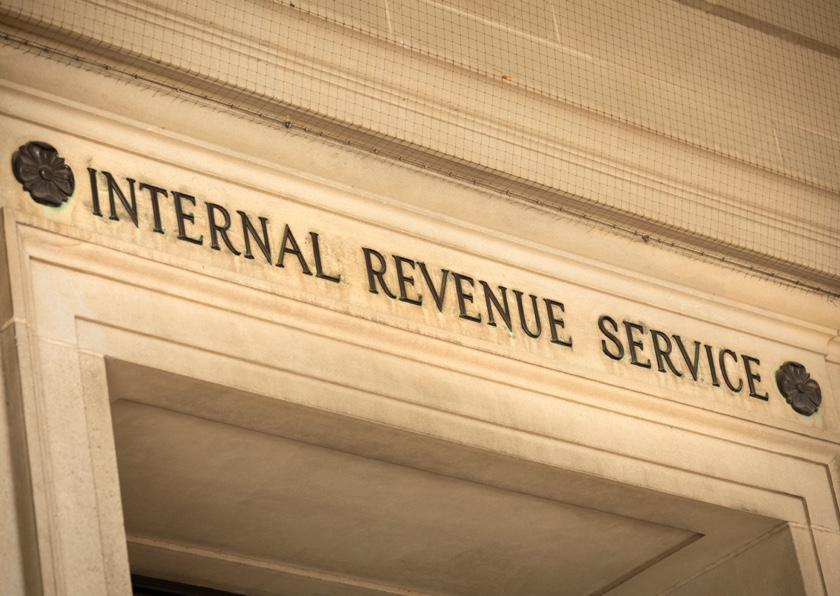Get Ready for Taxes: Get ready today to file 2019 federal income tax returns
The Internal Revenue Service today urged taxpayers to act now to avoid a tax-time surprise and ensure smooth processing of their 2019 federal tax return.
This is the first in a series of reminders to help taxpayers get ready for the upcoming tax filing season. To that end, a special page, newly updated and available on IRS.gov, outlines things taxpayers can do now to prepare for the 2020 tax season ahead.
Adjust withholding; Make estimated or additional tax payments
The IRS urges everyone to use the Tax Withholding Estimator to perform a paycheck or pension income checkup. This is even more important for those who received a smaller refund than expected or owed an unexpected tax bill last year.
It’s also a good idea for anyone who had a key life event, such as getting married, getting divorced, having or adopting a child, retiring, buying a home or starting college.
If the Tax Withholding Estimator recommends a change, an employee can then submit a new Form W-4, Employee’s Withholding Allowance Certificate, to their employer. Don’t send this form to the IRS.
Similarly, recipients of pension or annuity income can use the results from the estimator to complete a Form W-4P, Withholding Certificate for Pension or Annuity Payments, and give it to their payer.
Taxpayers who receive a substantial amount of non-wage income should make quarterly estimated tax payments. This can include self-employment income, investment income (including gain from the sale, exchange or other disposition of virtual currency), taxable Social Security benefits and in some instances, pension and annuity income. Making estimated tax payments can also help a wage-earner cover an unexpected withholding shortfall.
Estimated tax payments are due quarterly, with the last payment for 2019 due on Jan. 15, 2020. Form 1040-ES, Estimated Tax for Individuals, has a worksheet to help figure these payments. Payment options can be found at IRS.gov/payments.
Workers and retirees who receive self-employment income or income from the gig economy, including payments in the form of virtual currency, should make sure to take these amounts into account when they fill out the Tax Withholding Estimator. Payments received in virtual currency by independent contractors and other service providers are taxable, and self-employment tax rules generally apply. Normally, payers must issue Form 1099-MISC. Similarly, wages paid using virtual currency are taxable to the employee, subject to withholding, and must be reported by the employer on a Form W-2.
People with more complex tax situations should use the instructions in Publication 505, Tax Withholding and Estimated Tax. This includes those who owe alternative minimum tax or various other taxes, and people with long-term capital gains or qualified dividends.
Gather documents and organize tax records
The IRS urges all taxpayers to develop a recordkeeping system − electronic or paper − that keeps important information in one place. Keep copies of filed tax returns and all supporting documents for at least three years. This includes year-end Forms W-2 from employers, Forms 1099 from banks and other payers, other income documents, records documenting all virtual currency transactions, and Forms 1095-A for those claiming the Premium Tax Credit. Add tax records to the files as they are received. Having complete and timely records can help any taxpayer file a complete and accurate return.
Taxpayers should confirm that each employer, bank or other payer has a current mailing address or email address. Typically, year-end forms start arriving by mail – or are available online – in January. Review them carefully and, if any of the information shown is inaccurate, contact the payer right away for a correction.
To avoid refund delays, be sure to gather all year-end income documents before filing a 2019 return. Filing too early, before receiving a key document, often means a taxpayer must file an amended return to report additional income or claim a refund. It can take up to 16 weeks to get an amended return refund.
Anyone using a software product for the first time may need the Adjusted Gross Income (AGI) amount shown on Line 7 of their 2018 return to file their 2019 return electronically. Consult the taxpayer’s copy of last year’s return, or alternatively, visit the View Your Tax Account link on IRS.gov. Learn more about verifying identity and electronically signing a return at Validating Your Electronically Filed Tax Return.
Notify the IRS of address changes and notify the Social Security Administration of a legal name change to avoid refund delays.
Renew expiring tax ID numbers
Taxpayers with expiring Individual Taxpayer Identification Numbers can get their ITINs renewed more quickly and avoid refund delays next year by submitting their renewal application soon.
An ITIN is a tax ID number used by any taxpayer who doesn’t qualify to get a Social Security number. Any ITIN with middle digits 83, 84, 85, 86 or 87 will expire at the end of this year. In addition, any ITIN not used on a tax return in the past three years will expire. ITINs with middle digits 70 through 82 that expired in 2016, 2017 or 2018 can also be renewed.
The IRS urges anyone affected to file a complete renewal application, Form W-7, Application for IRS Individual Taxpayer Identification Number, as soon as possible. Be sure to include all required ID and residency documents. Failure to do so will delay processing until the IRS receives these documents.
Once a completed form is filed, it typically takes about seven weeks to receive an ITIN assignment letter from the IRS. But it can take longer — nine to 11 weeks — if an applicant waits until the peak of the filing season to submit this form or sends it from overseas.
Taxpayers who fail to renew an ITIN before filing a tax return next year could face a delayed refund and may be ineligible for certain tax credits. With nearly 2 million taxpayer households impacted, applying now will help avoid the rush as well as refund and processing delays in 2020. For more information, visit the ITIN information page on IRS.gov.
Be prepared to file electronically; Use Direct Deposit for refunds
Filing electronically is easy, safe and the most accurate way to file taxes. There are a variety of free electronic filing options for most taxpayers including using IRS Free File for taxpayers with income below $66,000, or Fillable Forms for taxpayers who earn more. Taxpayers who generally earn $56,000 or less can have their return prepared at a Volunteer Income Tax Assistance site. Tax Counseling for the Elderly sites offer free tax help for all taxpayers, particularly those who are 60 years of age and older.
Combining Direct Deposit with electronic filing is the fastest way to get a refund. With Direct Deposit, a refund goes directly into the taxpayer’s bank account. No need to worry about a lost, stolen or undeliverable refund check. This is the same electronic transfer system used to deposit nearly 98% of all Social Security and Veterans Affairs benefits. Nearly four out of five federal tax refunds are deposited directly.
Direct Deposit is easy to use. Taxpayers select it as their refund method through tax software or let their tax preparer know they want direct deposit. Taxpayers can even choose Direct Deposit on a paper return. Be sure to have bank account and routing numbers handy and double check entries to avoid errors.
Direct Deposit also saves taxpayer dollars. It costs the nation’s taxpayers more than $1 for every paper refund check issued but only a dime for each Direct Deposit.
By law, the IRS cannot issue refunds for people claiming the Earned Income Tax Credit (EITC) or Additional Child Tax Credit (ACTC) before mid-February. The law requires the IRS to hold the entire refund − even the portion not associated with EITC or ACTC. This law change, which took effect in 2017, helps ensure that taxpayers receive the refund they’re due by giving the IRS more time to detect and prevent fraud.
The IRS cautions taxpayers not to rely on receiving a refund by a certain date, especially when making major purchases or paying bills. Some returns may require additional review and may take longer. For example, the IRS, along with its partners in the tax industry, continue to strengthen security reviews to help protect against identity theft and refund fraud.
Start with IRS.gov for help that includes tools, filing options and other services and resources. Taxpayers increasingly use IRS.gov as their first resource for tax matters. Information in languages other than English is available under the “Language” tab on IRS.gov.
The Let Us Help You page on IRS.gov features links to information and resources on a wide range of topics.










